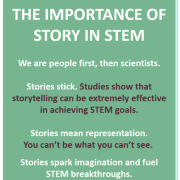
Removing systemic barriers to equity, diversity, and inclusion: Report of a 2019 workshop “Inclusivity in the Plant Sciences” (Plant Direct)
Plant Science Research WeeklyIn January 2019, a workshop was convened to explore strategies to address inclusivity in the plant sciences, and the recommendations emerging from this workshop are presented in a new report by Henkhaus et al. The authors recognize that this is an expansive challenge and requires action on many fronts,…
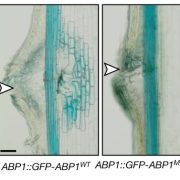
ABP1 (it’s back!) binds auxin and signals fast auxin responses (Nature)
Plant Science Research WeeklyOne of the longstanding questions in plant biology concernes how auxin coordinates both gene expression in the nucleus and the so-called fast responses at the cell periphery including proton extrusion and cytoskeletal rearrangements. At this point the nuclear branch is well understood, but the cell periphery…
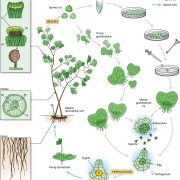
Two fern genome papers (Nature Plants)
Plant Science Research WeeklyThe September 2022 issue of Nature Plants includes two papers describing the analysis of homosporous fern genomes. Ferns are interesting for many reasons including the diversity of the clade, their typically very large genomes, their often free-living gametophytes, and in many cases, homospory (a single…

The vacuolar H+/Ca transporter CAX1 participates in submergence and anoxia stress responses (Plant Physiol)
Plant Science Research WeeklyCalcium (Ca) signaling is one of the primary plant responses to confront abiotic stresses. To coordinate Ca levels in the different compartments of the cell, several transporters are needed including the H+/Ca exchangers (CAXs) in the tonoplast (vacuolar membrane). While the role of calcium signaling…

Modus operandi of Nod-independent symbiosis in Aeschynomene evenia (Plant Physiol)
Plant Science Research WeeklySymbioses and nodule organogenesis processes that occur independently of Nod-factors are relatively unexplored. Quilbe et al. investigated the semi-aquatic legume Aeschynomene evenia, which has recently been shown to establish symbioses with Bradyrhizobium sp. that do not produce Nod factors. The authors…
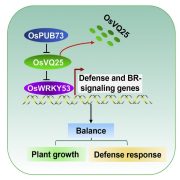
Identification of a cell signaling cascade that regulate s broad-spectrum resistance (Cell Reports)
Plant Science Research WeeklyMany different pathogens attack plants, and many genes have been identified that confer pathogen-specific resistance. In a recent study, Hao et al. identified a signaling cascade that regulates broad-spectrum disease resistance. This pathway is composed of a rice ubiquitin ligase OsPUB73, a VQ motif-containing…
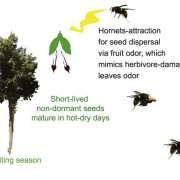
Agarwood harnesses hornets for rapid dispersal of non-dormant seeds (Curr. Biol.)
Plant Science Research WeeklyThe seeds of the Agarwood tree (Aquilaria sinensis) lose viability within a few hours of the fruit splitting, so need to reach the ground as soon as possible. Qin et al. report that agarwood achieves this by fooling hornets (Vespa spp.), which generally eat herbivore insects such as caterpillars. When…

Plant Science Research Weekly: September 9, 2022
Blog, Plant Science Research WeeklyRemoving systemic barriers to equity, diversity, and inclusion: Report of the 2019 Plant Science Research Network workshop “Inclusivity in the Plant Sciences”
In January 2019, a workshop was convened to explore strategies to address inclusivity in the plant sciences, and the recommendations emerging…

Yang Zhou: The Plant Cell First Author
The Plant Cell: Author Profiles
Yang Zhou, first author of "Rice EIL1 interacts with OsIAAs to regulate auxin biosynthesis mediated by the tryptophan aminotransferase MHZ10/OsTAR2 during root ethylene responses"
Current Position: Postdoc, Institute of Genetics and Developmental Biology, Chinese Academy of Sciences
Education:…

